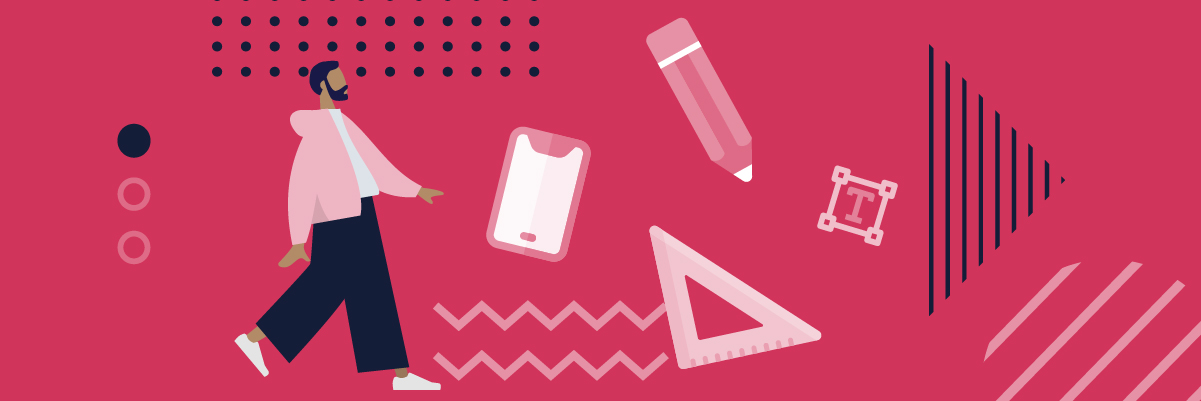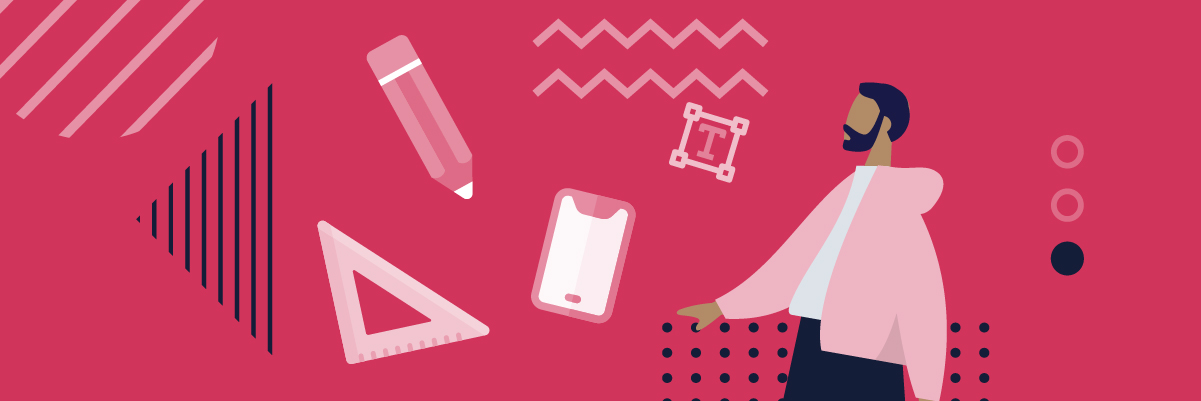“UI UX” is one of those terms you might have seen in trendy design spaces. But, aside from its place with the “in” tech crowd, there’s more to all this slang than looking cool. In fact, if you want to have not just the best design, but also the best function to go with it, there’s no getting around user interfaces and user experience. Today, we’ll take a deeper look at both of them.
And yeah, I know how disorienting all this terminology can be. Why can’t all the cool kids seem to say things in layman’s terms? Why does everything seem to be couched in this cryptic pseudo-language?
Well, it turns out that the status quo is changing and evolving — for the better if you ask me. And, as we get progressively more tech-savvy, some things that seemed to be forbidden arcana before are entering the realm of common knowledge. UI UX is no different, and trust me, being an informed consumer can mean the difference between gaining or losing your audience.
If you know about UI UX design, you’ll have the gateway to:
- The best-looking designs.
- Sites, apps, games, and interfaces that don’t just look cool, but feel good to use.
- Ways to tap into the desires, needs, and personalities of your client base. This also serves up the double whammy of knowing what works best before you even start.
All right, time to get a move on! Hopefully, when you’re done with this article I’ll have helped clear up a bit of what this all means. And, as a bonus, I’ll also throw in where to find the best pros available so you can have a headstart on the competition.
Andiamo!
This post has been updated in September 2021.
UI UX — What’s the Difference?
UX, the Unsung Hero
UI UX are two different, but complementary sides of the same coin (title drop!). While they’ve been around forever, it’s only up until relatively recently that the tech industry officially christened them. UX might be the hardest — or rather, more subtle — of the two, so let’s start with it, the invisible hero of good design.
In our in-depth article about UX design, I wrote:
So, UX design is about the interaction between people and the products, services, apps, or machines they use every day. It’s a discipline that combines aspects of human psychology, business, market research, design, and technology.
The idea is to make the user’s experience as seamless, painless, and hassle-free as possible. While you could conceivably ask yourself “how hard could it be?” the answer is “more than you think”. After all, we already live in a world where UX has become rather standardized, and our everyday experience is enhanced by decades of trial-and-error. Even today, it’s a painstaking task that is easier said than done.
UX, in and of itself, is more of a scientific process than something that applies to just graphic design. Anything from designing an electric car, to furniture, video games, ashtrays, coffee mugs, etc., has some real-world application of UX.
But, within the UI UX sphere, it broadly covers the space of interaction between a consumer and a product. In the “applied tech” case, that basically means images, documents, websites, programs, apps, video games, etc. We live in a technological universe that’s very interactive, and that’s thanks to the efforts of committed, talented UI UX designers.
In short, UX is the backbone of the whole experience; it doesn’t concern itself with the visual but does use it to enhance the end result.
UI, the Visible Face
In the UI UX world, UX is the “behind the scenes,” while UI is on the main stage. Without either, the whole thing would collapse, so it’s as integral to the whole thing as UX. And, in fact, it might be the part of the process you know the most.
UI is practically interchangeable with the term “design” for laypeople. This is through no fault of their own. Usually, things get so muddled that even employers posting jobs don’t know the difference between UI and UX. And, not every designer is good at both; finding great true UI UX designers is pretty rare, though thankfully their numbers are growing these days.
When it comes to UI or User Interface, we’re talking about a term for the digital ecosystem. If we use it with products, it’s about the direct point of interaction between consumer and product (a touchscreen, a button, a menu). When, on the other hand, we’re talking about digital consumer goods like apps, games, and websites, UI concerns itself with the look, direct feel, and interactivity of the product.
To do their job, UI designers have to consider every visual and interactive element carefully. Intuition is the name of the game; there’s no product on this Earth that will get far if the design is cumbersome, counterintuitive, or just plain weird. The whole point is to guide the user through an easy-to-use visual experience that feels organic.
So, what are the tools of a good UI designer?
- Color
- Space
- Typography
- Images
- Responsive Design (when designs can render well on a variety of devices, say desktop, mobile, etc.)

UI UX — Key Differences
So, with all this talk about interactivity, visual sensibilities, intuition, things may start to clear up. But, in case they don’t, don’t worry! Even experts in the design field tend to conflate UI and UX, so I’m going to make things a bit clearer for you.
Imagine UI being the paint, the visible facade on a building. Meanwhile, the steel beams, lintels, parapet, and all of the inner structural workings are part of UX. One of these is about the presentation, the other is the feel, optimization, and usability of the final thing.
- UI is about presenting great-looking, functional interfaces.
- UX is about establishing, implementing, and optimizing the user’s experience.
And, like the title of this article says, they’re both parts of the same whole; you just can’t have one without the other. The best-looking interface in the world isn’t going to make a difference if it’s a jumbled mess. Conversely, the best-planned UX isn’t going to be worth anything if the whole thing looks like it was hastily slapped together with Canva.
What’s the Beginning of the UI UX Journey?
It all starts with UX. Basically, a designer has to think about the customer’s entire journey from the ground up. In our article about UX, I wrote the following:
And that’s the core of UX design in a nutshell: empathy. These designers are powerful empaths who put your needs as a user first and foremost. They utilize systems that help them create virtual run-throughs of what a user — such as yourself — would do. Then, they leverage their knowledge of UX dos and don’ts as they strive to create a working model that serves as the blueprint for the broader design process. This mix of experience and intuition is what makes them invaluable assets.
So, think of the UX designer as the lifeblood, the backbone. Once they’ve mapped out where the customer can and should go, then the UI designer steps in to sprinkle their brand of pixie dust. And that’s not just making amazing-looking graphics, mind you; a UI designer has to think about every possible interaction point, and how it feels and responds. This may be anything from lettering, a touchscreen, to a button, a scrolling bar, etc. They use the tools at their disposal — including design basics such as image composition — to enhance and highlight the functional aspects.
The ideal, the perfect conclusion of all of this, is a product that is both accessible and inclusive.
To Recap
Hopefully, things make more sense now. Let’s go over it again to see whether I’ve managed to make it all come together:
- The UX designer draws the map using their empathy and know-how. This is not just magic, though, they make use of every data point at their disposal, including customer personas (rough stereotypes of customer behavior and attitude). Things don’t come from thin air.
- They identify problems, behavior patterns, and try to find the optimal route to the goal.
- Also something to remember: UX is not just something that happens in the realm of tech. It’s a scientific process that you can use for anything. Someone meticulously planned the ergonomics of the phone or mouse you’re using right now. UI, on the other hand, is a tech-only thang.
- After that’s all settled, the UI designer comes in. They think “how do I make this fit together both visually and functionally? and “how do I make sure that design principles can help the customer successfully complete their journey?” This encompasses creating beautiful, striking visuals, yeah. But it also includes readability, accessibility, inclusivity, and general clarity. It takes plenty of elegance and knowledge to achieve all of these things.
Where Do I Find UI UX Designers?
Fortunately, that’s the easier part of this article. Bunny Studio is the one-stop-shop for talented freelancers. Over time, we’ve established a community of voice, design, translation, copywriting, and video experts. And that’s only the entree because we’re gearing up for much more!
So, if you need a hassle-free way to hire vetted, professional UI UX designers, we’re the place to go. We only accept freelancers who’ve proven they’ve got the goods, and they’ve amassed hundreds — or even thousands — of positive client reviews. We’ve made it so if it’s good enough for us, it’s going to be good for you, and that’s a guarantee. (No, really, it’s a guarantee, you get 100% of your money back if you don’t like the results.)
So, are you going to leave your mission-critical design needs up to chance? I don’t think so!










